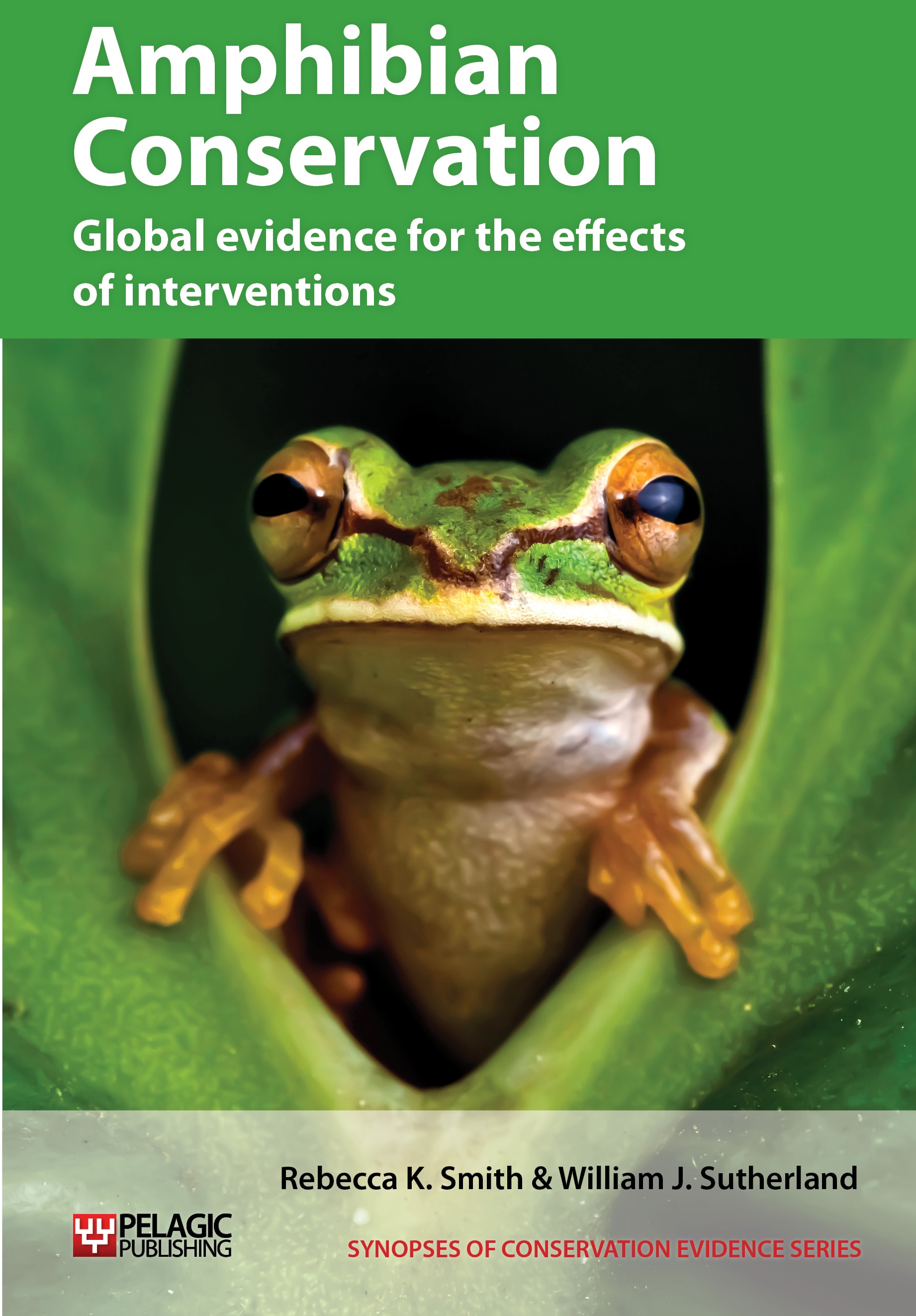Release captive-bred Mallorcan midwife toads
-
Overall effectiveness category Trade-off between benefit and harms
-
Number of studies: 4
View assessment score
Hide assessment score
How is the evidence assessed?
-
Effectiveness
68% -
Certainty
58% -
Harms
20%
Study locations
Supporting evidence from individual studies
A review of release programmes for captive-bred Mallorcan midwife toads Alytes muletensis in Mallorca (Bloxam & Tonge 1995) found that breeding populations were established at three of the eight release sites. Four of the other sites had calling males that were expected to breed by the end of 1994. Captive-bred toads, from three institutions, were released on eight occasions starting in 1989.
Study and other actions testedA before-and-after study in 1985–2002 in Mallorca (Román 2003) found that captive-bred Mallorcan midwife toads Alytes muletensis released as larvae and adults established breeding populations at 12 of 15 sites. Between four and 721 larvae were counted per site in 2001 and 4,000–5,000 were counted at one site in 2002. Two of the three populations failed because of predation by viperine snakes Natrix maura. From 1985, captive breeding was undertaken by a number of national and international centres. Adults (0–387/site) and larvae (0–227) were released at 15 sites over one to nine years in 1985–1997. Populations were surveyed in 2001.
Study and other actions testedA randomized, replicated, controlled study in captivity the UK (Kraaijeveld-Smit et al. 2006) found that predator defences were maintained in a captive-bred reintroduced population of Mallorcan midwife toads Alytes muletensis, but genetic diversity was reduced. There was no significant difference in morphological responses to predators in a population that had been captive-bred for 3–8 generations and released in a predator-free pond and the ancestral natural population. Tail length, lower tail fin shape and development did not differ. In terms of genetic diversity, although heterozygosity was similar between populations, the reintroduced population had lower allelic richness. Forty-eight tadpoles from the natural and reintroduced population (with the same ancestry) were captured. Treatments were: chemical cues from viperine snakes Natrix maura or green frogs Rana perezi or a control. Tadpoles were measured each 15 days. DNA was analysed.
Study and other actions testedA replicated study in 1989–2001 in Mallorca (Griffiths, García & Oliver 2008) found that released captive-bred Mallorcan midwife toads Alytes muletensis established stable and in some cases increasing, breeding populations at all 18 release sites. Seventy-six captive-bred tadpoles were released at two sites in 1989. Toadlets and tadpoles were then released on an annual basis up to 1997 and less regularly until 2001. Toads were screened for disease before release. Tadpoles were counted annually at the 18 release sites.
Study and other actions tested
Where has this evidence come from?
List of journals searched by synopsis
All the journals searched for all synopses
This Action forms part of the Action Synopsis:
Amphibian Conservation
Amphibian Conservation - Published 2014
Amphibian Synopsis





)_2023.JPG)














